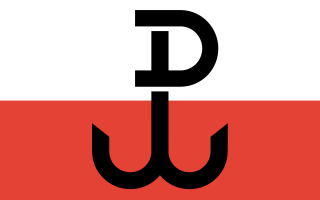
The Home Army was the dominant resistance movement in German-occupied Poland during World War II. The Home Army was formed in February 1942 from the earlier Związek Walki Zbrojnej established in the aftermath of the German and Soviet invasions in September 1939. Over the next two years, the Home Army absorbed most of the other Polish partisans and underground forces. Its allegiance was to the Polish government-in-exile in London, and it constituted the armed wing of what came to be known as the Polish Underground State. Estimates of the Home Army's 1944 strength range between 200,000 and 600,000. The latter number made the Home Army not only Poland's largest underground resistance movement but, along with Soviet and Yugoslav partisans, one of Europe's largest World War II underground movements.
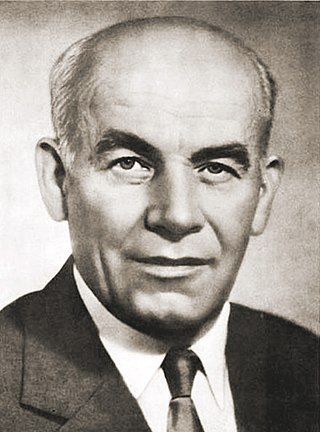
Władysław Gomułka was a Polish Communist politician. He was the de facto leader of post-war Poland from 1947 until 1948, and again from 1956 to 1970.

The Polish Workers' Party was a communist party in Poland from 1942 to 1948. It was founded as a reconstitution of the Communist Party of Poland (KPP) and merged with the Polish Socialist Party (PPS) in 1948 to form the Polish United Workers' Party (PZPR). From the end of World War II the PPR led Poland, with the Soviet Union exercising moderate influence. During the PPR years, the centers of opposition activity were largely diminished, and a socialist system was established in the country.

The Polish Underground State was a single political and military entity formed by the union of resistance organizations in occupied Poland that were loyal to the Government of the Republic of Poland in exile in London. The first elements of the Underground State were established in the final days of the German and Soviet invasion of Poland, in late September 1939. The Underground State was perceived by supporters as a legal continuation of the pre-war Republic of Poland that waged an armed struggle against the country's occupying powers: Nazi Germany and the Soviet Union. The Underground State encompassed not only military resistance, one of the largest in the world, but also civilian structures, such as justice, education, culture and social services.

Biuletyn Informacyjny was a Polish underground weekly published covertly in General Government territory of occupied Poland during World War II. The magazine was edited by Aleksander Kamiński and distributed as the main organ of ZWZ-AK headquarters in Warsaw, initially in order to inform the AK soldier about ongoing resistance activities. By 1944 Biuletyn Informacyjny had a circulation of 42,000-43,000 copies. The publishers recommended readers to have the articles reprinted in provincial underground publications throughout Poland.
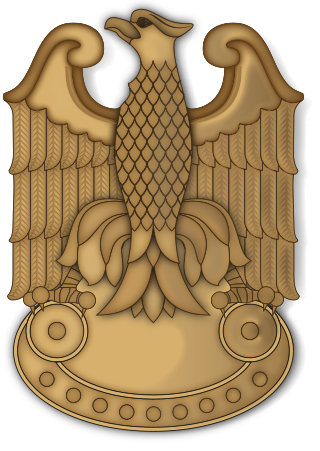
People's Army was a communist Soviet-backed partisan force set up by the communist Polish Workers' Party (PPR) during World War II. It was created on the order of the Polish State National Council on 1 January 1944. Its aims were to fight against Nazi Germany in occupied Poland, support the Soviet Red Army against the German forces and aid in the creation of a pro-Soviet communist government in Poland.

The Union of Armed Struggle, also translated as the Union for Armed Struggle, Association of Armed Struggle, and Association for Armed Struggle, was an underground army formed in Poland following its invasion in September 1939 by Germany and the Soviet Union that opened World War II. It existed from 13 November 1939 until 14 February 1942, when it was renamed into Home Army.

The Polish Committee of National Liberation, also known as the Lublin Committee, was an executive governing authority established by the Soviet-backed communists in Poland at the later stage of World War II. It was officially proclaimed on 22 July 1944 in Chełm, installed on 26 July in Lublin and placed formally under the direction of the State National Council. The PKWN was a provisional entity functioning in opposition to the London-based Polish government-in-exile, which was recognized by the Western allies. The PKWN exercised control over Polish territory retaken from Nazi Germany by the Soviet Red Army and the Polish People's Army. It was sponsored and controlled by the Soviet Union and dominated by Polish communists.

Janusz Bokszczanin was a colonel of the Polish Army and one of the first Polish commanders of the motorized troops in the reborn Second Polish Republic. During World War II he joined the ZWZ resistance organization and later the Home Army. Until 1943 he served as chief of department of rapid response within its headquarters. In 1944, prior to the anti-Fascist Operation Tempest, he became the chief of operations, and deputy chief of staff of the entire Home Army (AK).

Union of Polish Patriots was a political body created by Polish communists in the Soviet Union in 1943. The ZPP, unofficially controlled and directed by Joseph Stalin, became one of the founding structures of the Soviet-controlled communist government that after World War II took power in Poland.

The Holy Cross Mountains Brigade was a controversial tactical unit of the Polish National Armed Forces established on 11 August 1944. It did not obey orders to merge with the Home Army in 1944 and was a part of the Military Organization Lizard Union faction, related to the National Radical Camp political party. Its soldiers fought simultaneously with the Nazi Germany, the Soviet Union and the Polish communist underground, though it sometimes collaborated with the Nazis to further its anti-communist, anti-Jewish and totalitarian goals.

In Poland, the resistance movement during World War II was led by the Home Army. The Polish resistance is notable among others for disrupting German supply lines to the Eastern Front, and providing intelligence reports to the British intelligence agencies. It was a part of the Polish Underground State.

Tadeusz Żenczykowski, pseudonym Kania, Kowalik and Zawadzki was a Polish lawyer, political activist and soldier in the Armia Krajowa during World War II, taking part in the Warsaw Uprising of 1944. Immediately after the war, he was a member of the anti-communist conspiracy in Poland. In 1945, he emigrated and became a journalist and deputy chief of the Polish Section of Radio Free Europe, historian and publicist.
Anti-communist resistance in Poland can be divided into two types: the armed partisan struggle, mostly led by former Armia Krajowa and Narodowe Siły Zbrojne soldiers, which ended in the late 1950s, and the non-violent, civil resistance struggle that culminated in the creation and victory of the Solidarity trade union.
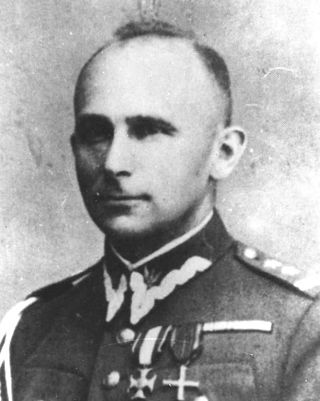
The Bureau of Information and Propaganda of the Headquarters of Związek Walki Zbrojnej, later of Armia Krajowa, a conspiracy department created in spring 1940 during the German occupation of Poland, inside the Związek Walki Zbrojnej, then of the Supreme Command of Armia Krajowa.

Operation N was a complex of sabotage, subversion and black-propaganda activities carried out by the Polish resistance against Nazi German occupation forces during World War II, from April 1941 to April 1944. These activities were organized by Office N, which in October 1941 was transformed into an Autonomous Sub-Department N of the Bureau of Information and Propaganda of the Armed Resistance, later of the Home Army. It was headed by Tadeusz Żenczykowski.

Organizacja Wojskowa Związek Jaszczurczy was an organization of Polish resistance in World War II. Created in 1939 and transformed into National Armed Forces in 1942, it represented the far right of the Polish political spectrum (related to the National Radical Camp political party. It refused to recognise the broadly internationally recognised Polish Government-in-exile, although there was some uneasy tactical cooperation for practical reasons. It and descendants also refused to recognise the Soviet-aligned Polish Committee of National Liberation and continued to resist the new Polish communist regime and the USSR after the war.

Tajne Wojskowe Zakłady Wydawnicze was the secret printing and publishing house of the Polish Underground State in Warsaw, Nazi-occupied Poland. It was run, from its creation in late 1940 to disbandment in early 1945, by Jerzy Rutkowski of Bureau of Information and Propaganda of the Polish resistance.

Marian Bernaciak was a lieutenant in the Polish Army, a member of ZWZ and the Home Army, a major and a legendary leader of an underground partisan unit of WiN in the Lublin region.
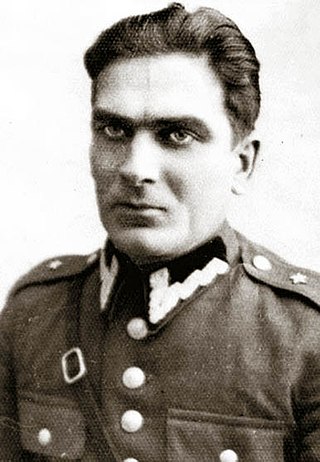
Major Franciszek Jerzy Jaskulski, aka 'Zagończyk', was a soldier in the Polish Home Army and a commander in Freedom and Independence in the Radom region of Poland. In 2007 the Polish president Lech Kaczyński posthumously awarded Jaskulski the order of Polonia Restituta.















